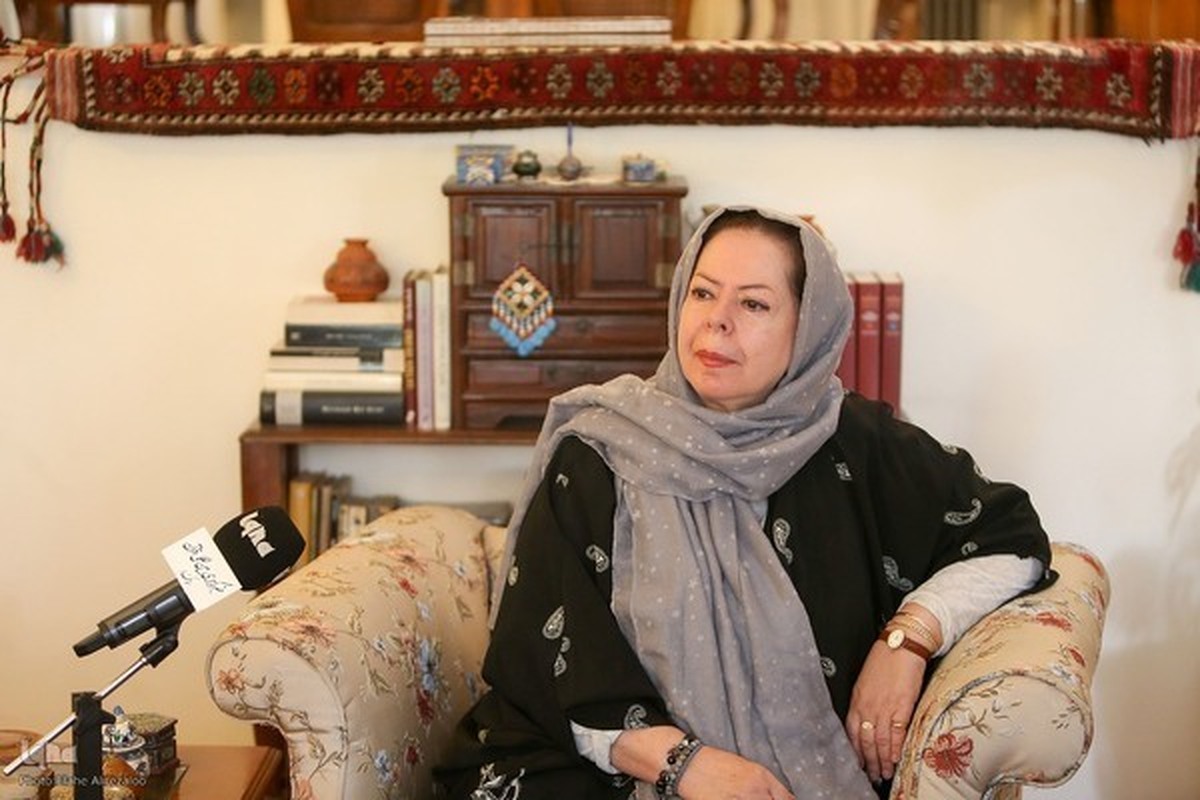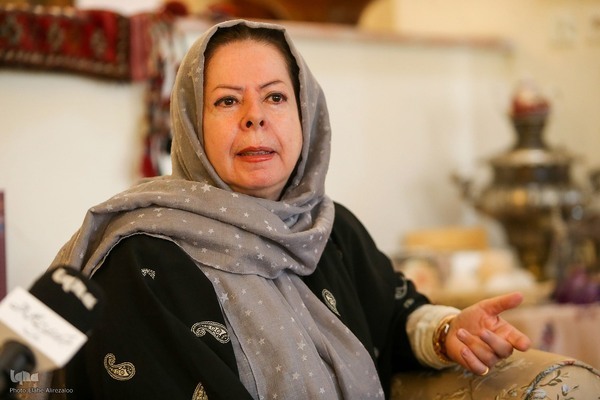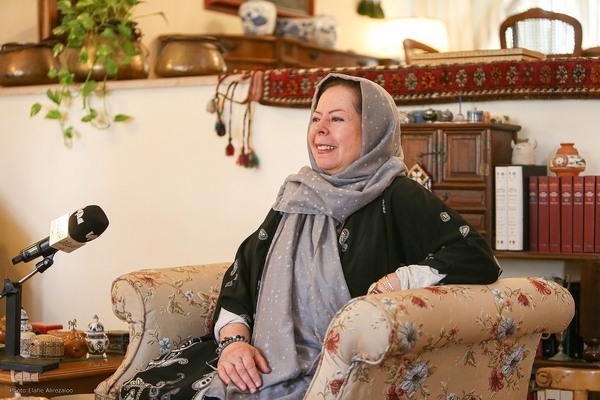A Mystical Experience: Translating Ferdowsi’s Shahnameh for 600 Million Spanish Speakers


Referring to the fact that for the first time in a thousand years the Shahnameh has been translated into Spanish, Beatriz Salas said, “Translating the Shahnameh was a mystical experience for me. I enjoyed it from the very first page to the last. The Shahnameh is full of symbols and is like a tall fortress that neither the sun nor the wind can destroy.”
The Shahnameh is a long epic poem written by the Persian poet Ferdowsi between 977 and 1010 CE and is the national epic of Iran. Consisting of some 50,000 couplets (two-line verses), the Shahnameh is one of the world’s longest epic poems, and the longest epic poem created by a single author.
Salas, a Spanish professor of the Tehran Islamic Azad University, spoke about her translation in an interview with IQNA, excerpts of which are as follows:
IQNA: Please introduce yourself and tell us what made you decide to translate the Shahnameh?
Salas: I’m Beatriz Salas. My father is Venezuelan, my mother is Spanish, and my husband is from South Khorasan, Iran. About 30 years ago, we decided to live in Iran and raise our two children in Iran. I’m very happy to live in Iran. I recently retired from university and have taught Spanish language and literature for almost 30 years at the University of Tehran and the Islamic Azad University.
IQNA: Can you tell us about your connection with Ferdowsi?
Salas: It truly was the work of God that this book came into my hands. At a meeting, Iran’s Ministry of Foreign Affairs asked ambassadors from various Spanish-speaking countries why the Shahnameh had not yet been translated into Spanish. Later, UNESCO raised this request as well. (In 2009, UNESCO recognized the millennium of the Shahnameh’s composition and called for its translation into Spanish that same year.)
At that time, the Venezuelan ambassador accepted the proposal and said he knew someone who might agree to undertake the translation. When they offered me this, I was afraid and said it was a heavy responsibility, but they insisted and said, “Read the Shahnameh and let’s see what happens.” I read it and realized that, with my husband’s help, I could translate it—though into prose, not poetry.
I am not a Shahnameh scholar at all. Many years ago, when I came to Iran, I visited the village where my husband was born, called Forg (a village near Birjand, South Khorasan Province). There, there is a beautiful fortress. At the foot of the fortress, two children were playing very seriously. I thought they were playing cops and robbers. I asked my son what serious game these six-year-old children were playing. He said it wasn’t a game but more like a play, and they were acting out Rostam and Sohrab. He explained to me that the story of Rostam and Sohrab is one of the most important parts of the Shahnameh. So, just two weeks after I arrived in Iran, this story began for me, and a few years later, on the thousandth anniversary of Ferdowsi’s composition of Shahnameh, this book came into my hands.
IQNA: So you first learned about Rustom and Sohrab?
Salas: Yes, through the same two children. When I saw the children playing, I said, “What an interesting art and country”. In Spain, you don’t see two children playing Don Quixote. I really enjoyed that scene, because I’m a literature major. I started translating, and I can say that translating literature was a mystical work for me. This is not an exaggeration, and I enjoyed the book from the first page to the last, because it has everything. My field was teaching, and I was involved with young people. Ferdowsi talks about all the important things, and I think Ferdowsi is the best teacher for children. He is a Hakim (sage), because the problem with all people is that they don’t know a lot of things, and they’re confused in life, and they need the things that are said in the Shahnameh.

IQNA: How long did it take to translate the Shahnameh?
Salas: This is a seven-volume book. Each volume took about a year to complete. However, due to the coronavirus pandemic, the work was interrupted for two years, taking about nine to 10 years to complete. I was very nervous at first, and I was afraid that it wouldn’t come close to being the right thing to do, but as time went on, I gained confidence and moved forward.
IQNA: Who helped you translate the Shahnameh in Iran?
Salas: My husband, he mostly helped me with the pronunciation. I’m a classical person and I work with a pen and a desk and I can’t work with a computer at all. It’s very important that children continue to use pen and paper, because when you’re not typing by hand, it’s better for your brain, and your brain functions better. I asked a friend, Nazanin Nozari, who used to be my student, could you type this? She accepted and typed nearly 4,000 pages. Dr. Najmeh Shobeiri did the public relations and the publicity and the branding, and she supported me, because it didn’t work if no one knew about it.
Read More:
Nazanin introduced my book to Afshin Shahnetbar for publication. It really was God’s work that everything worked out. The book was first printed in 500 volumes by the Venezuelan Embassy, which was a luxury edition and was used as a Christmas gift and things like that, but when I asked the then ambassador of Venezuela to print the next volumes, they told me that they didn’t have any more funds. I told them that it was just the first volume that had been published, and that it had been translated until “The Battle of Mazandaran”, but they said we didn’t have the funds, and I said to myself, I have to finish this book, and I did.
IQNA: What is the greatest lesson that Hakim Ferdowsi gives to man (beyond geographical boundaries)?
Salas: It’s true that the Shahnameh was written by an Iranian, and it’s an Iranian work, but it’s an international work. Ferdowsi shows us how to be better human beings in our families, in our workplaces, in our communities. How to be a better father, a better son, a better human being. Because I have more contact with young people, what surprised me was that the literature is so up to date.
I was invited to the UX Shiraz conference. When I was invited, I said this conference was about computers and entrepreneurship and... And what can I offer there? But they told me, “Come, the students want to see you.”
I accepted, and I wondered, what could the Shahnameh be talking to these young people about? And then I said to myself, this is like drinking water (as easy as pie). I’m talking about the Jam Jam. It is a gift from God. It’s a cup that God gave the king. Ferdowsi says that when Bijan went missing, his father went to Keikhosrow and begged him to find his son. And Keikhosrow said to him, “I’m praying because the person who wants to see this cup must have a pure heart, or else they won’t be able to see it,” and when he looks inside the cup, he finds Bijan. In this cup, you can see the past, the present, the future, the sky and the earth. The king sent Rostam to rescue Bijan. The cup is a symbol. The Shahnameh is full of symbols.
I told the participants at that conference that today your cell phone is the Jam Jam, and you can experience and understand everything with it, harness its power and see the past and the future, but I ask you to work with this new science and technology with an open heart.
Read More:
I heard a Nobel Prize winner in physics talk about this, and he said, “Please give AI to people with pure hearts, because otherwise it’s going to be very dangerous”, and that’s what Ferdowsi said. A thousand years ago, a heavenly sage said the same thing, and now we know that the Jam Jam is very good, but if it’s in the hands of the wrong people, it would be very dangerous. I really congratulate the Iranians for having the jewels of Fardowsi and the Shahnameh.
IQNA: What place does the Shahnameh hold in the moral literature of writers and great figures around the world?
Salas: When I began the translation work, there was a wealth of evidence. The more I read the Shahnameh, the more I felt I had encountered its themes elsewhere. Since my field is literature, I realized that Cervantes (Miguel de Cervantes Saavedra, the Spanish poet and writer), Shakespeare, philosophers, and others had directly drawn ideas from the Shahnameh.
Most people are unaware, but in the TV series “Game of Thrones”, there are several elements directly adapted from the Shahnameh, and the resemblance is striking—from white hair to severed hands, the Simorgh, the Wall, the red-haired sorcerer, and more—all of which appear in the Shahnameh.
In research activities, when we read something and we get an idea, we have to mention the source. Where did the author of “Game of Thrones” get his inspiration from? He says, from Shakespeare, English history and... But I can see that he has gotten ideas from Ferdowsi, but why doesn’t he say it?
Now that the translation is complete, my team and I have begun to travel to 21 Spanish-speaking countries around the world to promote the book. I’ve been to Mexico twice, and I’ve presented the book three times in different universities in Spain, in different parts of the country, and people have been amazed at how much this book is lovable, but they’re not familiar with it.

IQNA: How familiar were you with Persian and with Ferdowsi before translating the Shahnameh?
Salas: Zero; my Persian is weak. Because at home, I speak English and Spanish, and at work, at the Venezuelan embassy and at the university, I speak Spanish.
I’ve been a journalist for more than 20 years, and I know how important it is to promote a work, which is why I want this translation to be recognized. I write for young people under 30, not just for intellectuals and academics, and I’m constantly participating in conferences and programs to make literature accessible to young people in particular.
IQNA: What are the media’s duties and responsibilities when it comes to introducing the Shahnameh and Ferdowsi?
Salas: News of the Shahnameh should be published. There are literacy programs going on in the cities on a regular basis, which is great. In Iran, everyone has the Quran and the Shahnameh in their homes, and it’s a custom. This culture needs to be revived and repeated over and over. If you don’t send your CV to different companies, no one will invite you to work. You have to introduce yourself. And the culture of the Shahnameh has to be promoted. The presentation of the Shahnameh abroad is also the responsibility of the Ministry of Foreign Affairs and Iranian embassies in other countries. When we went to Mexico, we got very good help from the Iranian ambassador in Mexico and also the ambassador in Spain. We also held a conference on the Shahnameh in two important universities in Madrid with the help of the Iranian Embassy in Spain. We don’t have the needed facilities ourselves. Teachers can give lectures and spend time and energy, but we need the support that the cultural part of Iranian embassies around the world should provide.
Read More:
The Mexican conference was great. The Shahnameh was very interesting for the Indians. We put copies of the Shahnameh in Spanish in the oldest library in America. The first Persian-language book translated into Spanish was also placed in the Mexican city of Puebla, but unfortunately there are not many facilities and you just have to be interested to go looking for it.
IQNA: Did reading the Shahnameh in Spanish-speaking countries also make them interested in Iranian culture?
Salas: Yes, people became interested in learning Persian and traveling to Iran. Mexico has a strong culture. When you want to know if a country’s culture is good, look at its cuisine. If their cooking is good, they have a strong culture. The cuisine in Mexico is as strong as Iran and China.
IQNA: What do you think is the most important message of the Shahnameh for humanity?
Salas: To always live with the remembrance of God. Ferdowsi is a man truly accepted by God. Nowadays, people seek materialism, pleasure, and so on, but Ferdowsi says enjoy life, yet understand that everything eventually fades except for good memories, so we should leave behind good memories before we go. (Ferdowsi says: “Blessed is the one whose good deeds remain as a legacy, whether they be a servant or a king.”
It doesn’t matter whether you are a king or a servant. We all leave, and only good memories remain as our legacy. This means you must do good in life, and this is a profound and valuable truth—essentially pure philosophy. It makes no difference if you are Iranian, Chinese, or Spanish. Eeveryone can benefit from this idea. Why does a story like Don Quixote become famous? Because everyone understands it. Don Quixote is a tall, intellectual man with a good family, while his servant is short, stingy, and illiterate. Everyone understands what these two say, but Ferdowsi’s style is extraordinary. He introduces himself and says, “I am doing this work for my country, even if no one supports me.”
IQNA: What is the secret to Ferdowsi’s enduring legacy?
Salas: It is the work of God. No ordinary person could have accomplished such a feat. The Shahnameh is a gift from God to the people. It beautifully portrays Iranian culture, family relationships, and even diplomacy. It vividly illustrates loyalty. Today, issues of unfaithfulness arise worldwide, and the Shahnameh teaches loyalty and kindness to others, emphasizing that everyone must fulfill their duties and responsibilities toward their family, neighbors, the entire country, and the world.
IQNA: The language of the Shahnameh is epic. Didn’t that make it difficult for you to translate the work?
Salas: I got help from my husband and even the Zoroastrian priest of Tehran to translate. That’s the nature of research, and you have to get help. It’s a big responsibility, and the smallest mistake is a big mistake. I knew it was going to be a lot of work, but I wanted to do a good job.
IQNA: What would have happened if the world didn’t have the Shahnameh?
Salas: You would be speaking Arabic right now. That’s it. Isn’t that significant? It’s very important that Ferdowsi saved the Persian language. Otherwise, like the Arab countries, you would be speaking Arabic today. Of course, this doesn’t mean Arabic is bad; rather, every country should be able to preserve its own culture well.
4284193



